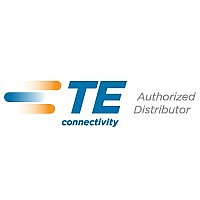611073-000 Tyco Electronics, 611073-000 Datasheet - Page 564

611073-000
Manufacturer Part Number
611073-000
Description
Connector Accessories Adapter Aluminum Alloy Olive Drab Cadmium Over Electroless Nickel
Manufacturer
Tyco Electronics
Type
Adapterr
Datasheet
1.163665N003.pdf
(637 pages)
- Current page: 564 of 637
- Download datasheet (13Mb)
9-82
Product Characteristics when Tested in Accordance with Raychem Specification WCD 2015 and WC 2001 (Zerohal with Fungicide)
Mechanical
Thermal aging
Fluid resistance
Electrical
Other
Low Fire Hazard Performance
Flammability
Current thinking on fire
hazard defines the term
‘Fire Risk’. This description
recognizes that the risk in a
fire situation is influenced
strongly from several factors
including, ignitability, heat
release, smoke evolution
and toxic gas emission
together with flammability.
There are several test
procedures available used
to assess flammability of
wires and cables. Still in
widespread use is Limiting
Oxygen Index (LOI), but it is
now generally recognized
that because the test is
conducted on a single
specimen (of cable jacket
or wire) in laboratory condi-
tions, the results are, at
best, only weakly correlated
to actual fire situations.
Critical Temperature Index
(CTI), is a related test and
assesses performance at
elevated temperature but
nevertheless it is still con-
ducted on a single speci-
men. More recent evidence
Catalog 1654025
Revised 12-04
www.tycoelectronics.com
Dimensions are in millimeters
and inches unless otherwise
specified. Values in brackets
are U.S. equivalents.
Cable Jacket Materials
Zerohal
and thinking places signifi-
cantly greater importance
on large scale flammability
tests, such as IEC 60332-3,
in which the sample con-
sists of several bundles of
wires. These tests predict
more accurately the likely
behavior of cables in actual
fire scenarios. Raychem
Zerohal cable jackets give
very good results in small
scale laboratory based
tests (e.g. LOI, CTI) and
Zerohal cables perform
very well in large scale
tests (e.g. IEC 60332-3).
Overall Zerohal jacketed
cables have been shown
to exhibit excellent
flammability characteristics.
Corrosivity
Under fire conditions, poly-
mers containing halogens,
sulphur and phosphorous
all form corrosive acid
gases or liquids. These
acids can then attack items
such as printed circuit
boards, connectors, control
relays and metal structures,
including steel reinforce-
ment bars embedded in
concrete.
Tensile strength (MPa)
Elongation (%)
Tear strength (N/mm)
Abrasion resistance (1.6 kg load )
Cold bend
Heat aging 120 h 130°C [266°F]
Heat shock 4 h at 225°C [437°F]
Diesel fuels 100°C [212°F] /24 h
IRM 902 24h, 100°C [212°F]
Lubricating oils 50°C [122°F]/24 h
Water uptake (ASTM D570) 70°C [158°F]/28 days
Insulation resistance 20°C [68°F]
M ohms km (min)
45° flammability
Vertical flammability
(Swedish Chimney)
Acid gas
Limiting oxygen index
Temperature index
Toxicity index
Smoke index
Halogen content
(Continued)
Dimensions are shown for
reference purposes only.
Specifications subject
to change.
Test methods to evaluate
corrosivity involve direct
measurement of the amount
of acid gas produced dur-
ing pyrolysis, eg to British
Rail Specification TDE
76/P/16 or measurement of
pH and electrical conduc-
tivities of solutions.
Toxicity Index
The various gases given off
by combustion of polymeric
materials are toxic to differ-
ing degrees.
The Def Stan 02-713,
assesses the concentration
of each of the possible by-
products and, by measuring
the amounts of these mate-
rials, a Toxicity Index is
assigned.
Zerohal jacket material has
a typical Toxicity Index of
1.7, compared to a typical
value of 6 for CSP and 20
for PVC jacketed cable.
The Def Stan 61-12 part 31
specification requirement
for a cable jacket is <5.
USA: 1-800-522-6752
Canada: 1-905-470-4425
Mexico: 01-800-733-8926
C. America: 52-55-5-729-0425
8
200
5
30 scrapes min.
-30°C [-22°F]
60% min retention of TS and Eb
No cracks, drips or flowing,
6 mm total shrinkage in 300 mm
Tensile strength
85
90
80
2% weight uptake (max)
40
Self extinguishing
Self extinguishing
1.2% HCl equivalent (max)
32%
275°C [527°F]
2.5 per 100 g
18
None detected
Retention of properties
Smoke
The problems of classifying
flammability and corrosive
gas generation equally
apply to measuring smoke
generation. The method
accepted by most authori-
ties involves the use of
the NBS smoke chamber
where optical density of
the chamber's atmosphere
is constantly measured
during pyrolysis.
The 10% visibility line indi-
cates the density of smoke
which would cause human
disorientation and confu-
sion. The rate of change
of smoke density can be
summarized to a single
numerical value, as in NES
711, to give a smoke index
for a material and thus
offers simple comparison of
materials performance.
South America: 55-11-3611-1514
Japan: 81-44-900-5102
Singapore: 65-4866-151
UK: 44-1793-528171
Elongation
75
75
75
Related parts for 611073-000
Image
Part Number
Description
Manufacturer
Datasheet
Request
R

Part Number:
Description:
ADPTR TINEL LOCK STR SHELL 13, C
Manufacturer:
Tyco Electronics
Datasheet:

Part Number:
Description:
MOUNTING HDWR BRACKET SLOTTED
Manufacturer:
Ohmite
Datasheet:

Part Number:
Description:
MOUNTING HDWR BRACKET SLOTTED
Manufacturer:
Ohmite
Datasheet:

Part Number:
Description:
MOUNTING HDWR BRACKET SLOTTED
Manufacturer:
Ohmite
Datasheet:

Part Number:
Description:
Manufacturer:
Tyco Electronics
Datasheet:

Part Number:
Description:
Manufacturer:
Tyco Electronics
Datasheet:











